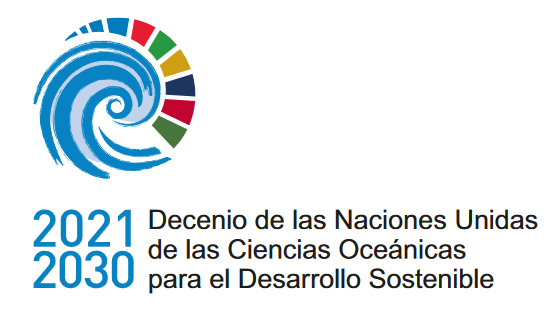Primer registro basado en código de barras de ADN de Lysiosquilla maculata (Crustacea: Stomatopoda) de la costa de Chennai, Tamil Nadu, India
DOI:
https://doi.org/10.47193/mafis.3722024010503Palabras clave:
Biodiversidad, camarón mantis, DNA mitocondrial, filogenia, distancia genéticaResumen
La identificación taxonómica del camarón mantis Lysiosquilla maculata se realizó mediante análisis de códigos de barras de ADN de especímenes recolectados en el puerto pesquero de Kasimedu, costa de Chennai, Tamil Nadu, India. Se secuenció el gen de la subunidad I de la citocromo oxidasa mitocondrial (mtCOI) con una región de 650 pb para análisis filogenético. En el presente registro, se utilizaron secuencias de genes mitocondriales para identificar el camarón mantis. Este es el primer registro confirmado de códigos de barras de ADN en aguas indias, cuya secuencia de mtCOI se depositó en el GenBank. Se utilizó el método Neighbor-joining para el análisis filogenético. La distancia genética por pares calculada con cinco especies estrechamente relacionadas osciló entre 0,01 y 0,094%. Los análisis morfológicos y moleculares confirman que los ejemplares colectados corresponden a L. maculata.
Descargas
Métricas
Citas
Ahyong ST. 1997. Phylogenetic analysis of the Stomatopoda (Malacostraca). J Crust Biol. 17: 695-715.
Ahyong ST. 2001. Revision of the Australian stomatopod Crustacea. Rec Aus Mus. 26: 1-326.
Ahyong ST 2012. The marine fauna of New Zealand: mantis shrimps (Crustacea: Stomatopoda). NIWA Biodiv Memo. 125: 1-112.
Ahyong ST, Chan TY, Liao YC. 2008. A catalogue of the mantis shrimps (Stomatopoda) of Taiwan. Keelung: National Ocean Taiwan University. 191 p.
Ahyong ST, Harling C. 2000. The phylogeny of the stomatopod Crustacea. Aus J Zool. 48 (6): 607-642.
Ahyong ST, Lin CW. 2002. Phylogenetic appraisal of Lysiosquillidae Giesbrecht, 1910, and a new species of Lysiosquilloides Manning, 1977, from Taiwan (Crustacea: Stomatopoda: Lysiosquilloidea). Zool Stud. 61 (12): 1-14.
Barber PH, Boyce SL. 2006. Estimating diversity of Indo-Pacific coral reef stomatopods through DNA barcoding of stomatopod larvae. Proc R Soc London Ser B Biol Sci. 273: 2053-2061.
Barber PH, Erdmann MV. 2000. Molecular systematics of the Gonodactylidae (Stomatopoda) using mitochondrial cytochrome oxidase C (Subunit 1) DNA sequence data. J Crust Biol. 20 (2): 20-36.
Barber PH, Erdmann MV, Palumbi SR. 2006. Comparative phylogeography of three co distributed stomatopods: origin and timing of regional lineage diversification in the coral triangle. Evolution. 60 (9): 1825-1839.
Barber PH, Moosa MK, Palumbi SR. 2002. Rapid recovery of genetic diversity of stomatopod populations on Krakatau: temporal and spatial scales of marine larval dispersal. Proc R Soc London Ser B Biol Sci. 269 (1500): 1591-1597.
Dev Roy MK, Gokul A. 2012. A checklist of Indian stomatopods (Crustacea: Stomatopoda). J Environ Sociobiol. 9 (1): 87-92.
Fabricius JC. 1793. Entomologia systematica emendata et aucta. secundum classes, ordines, genera, species. adjectis synonimis, locis, observationibus, descriptionibus. Vol. 2. Christ. Gottl. Proft., Hafniae. p. 519.
Folmer O, Black M, Hoeh W, Lutz R, Vrijenhoek R. 1994. DNA primers for amplification of mitochondrial cytochrome c oxidase subunit I from diverse metazoan invertebrates. Mol Marine Biol Biotechnol. 3: 294-299.
Hajibabaei M, Janzen DH, Burns JM, Hallwachs W, Hebert PDN. 2006. DNA barcodes distinguish species of tropical Lepidoptera. Proc Nat Acad Sci Unit Stat of America. 103: 968-971.
Hall BG. 2004. Comparison of the accuracies of several phylogenetic methods using protein and DNA sequences. Mol Biol Evol. 22 (3): 792-802.
Hebert PDN, Cywinska A, Ball SL, Dewaard JR. 2003. Biological identifications through DNA barcodes. Proc R Soc London Ser B Biol Sci. 270: 313-321.
Hebert PDN, Penton EH, Burns JM, Janzen DH, Hallwachs W. 2004. Ten species in one: DNA barcoding reveals cryptic species in the neotropical skipper butterfly Astraptesful gerator. Proc Nat Acad Sci Unit Stat America. 101: 14812-14817.
Holthuis LB. 1941. The Stomatopoda of the Snellius Expedition. Biological results of the Snellius Expedition XII. Temminckia. 6: 241-294.
Hubert N, Hanner R, Holm E, Mandrak NE, Taylor E, Burridge M, Watkinson D, Dumont P, Curry A, Bentzen P, et al. 2008. Identifying Canadian freshwater fishes through DNA barcodes. PLoS ONE. 3 (6): e2490. DOI: https://doi.org/10.1371/journal.pone.0002490
Kathirvel M. 2008. Biodiversity of Indian stomatopods. Glimpses of Aquatic Biodiversity Rajiv Gandhi Chair Spl Pub. 7: 93-102.
Kemp S. 1913. An account of the Crustacea Stomatopoda of the Indo-Pacific region, based on the collection in the Indian Museum. Mem Ind Mus. 4: 1-217.
Kumar S, Steche G, Tamura K. 2016. Mega 7: Molecular Evolutionary Genetics Analysis version 7.0 for bigger datasets. Mol Biol Evol. 33 (7): 1870-1874.
Kundu S, Rath S, Tyagi K, Chakraborty R, Pakrashi A, Kumar V, Chandra K. 2018. DNA barcoding of Cloridopsis immaculata: genetic distance and phylogeny of stomatopods. Mitochondrial DNA Part B. 3 (2): 955-958.
Lyla PS, Chandrasekaran VS, Khan SA. 1997. Stomatopoda of Parangipettai coast. Parangipettai: Centre of Advanced Study in Marine Biology, Annamalai University. 47 p.
Manning RB. 1978. New and rare stomatopod crustacea from the Indo-West Pacific region. Smith Contr Zool. 264: 1-44.
Moritz C, Cicero C. 2004. DNA barcoding: promise and pitfalls. PLoS Biol. 2: e354.
Saitou N, Nei M. 1987. Neighbor-joining method: a new method for reconstructing phylogenetic trees. Mol Biol Evol. 4: 406-425.
Steinke D, Vences M, Salzbruger, W, Meyer A. 2005. Tax I: a software tool for DNA barcoding using distance methods. Phil Trans R Soc B Biol Sci. 360: 1975-1980.
Tang RWK, Yau C, Chuenng W. 2010. Identification of stomatopod larvae (Crustacea: Stomatopoda) from Hong Kong waters using DNA barcodes. Mol Ecol Res. 10: 439-448.
Trivdedi JN, Ahyong ST, Vachhrajani KD, Biju Kumar A. 2020. An annotated checklist of mantis shrimps of India (Crustacea: Stomatopoda). Zootaxa. 4768 (2): 221-238.
Wakabayashi T, Suzuki N, Sakai M, Ichii T, Chow S. 2006. Identification of ommastrephid squid paralarvae collected in northern Hawaiian waters and phylogenetic implications for the family Ommastrephidae using mtDNA analysis. Fish Sci. 72: 494-502.
Ward RD, Zemlak TS, Innes BH, Last PR, Hebert PDN. 2005. DNA barcoding Australia’s fish species. Phil Trans R Soc B Biol Sci. 360: 1847-1857.

Publicado
Cómo citar
Número
Sección
Licencia
Derechos de autor 2023 Chelliah Babu, Krishnan Silambarasan, Antony P. Anrose, Antony P. Tiburtius

Esta obra está bajo una licencia internacional Creative Commons Atribución-NoComercial-CompartirIgual 4.0.
Los autores de los artículos publicados en Marine and Fishery Sciences conservan los derechos de autor de sus artículos, a excepción de las imágenes de terceros y otros materiales añadidos por Marine and Fishery Sciences, que están sujetos a los derechos de autor de sus respectivos propietarios. Por lo tanto, los autores son libres de difundir y volver a publicar sus artículos, sujeto a los requisitos de los propietarios de derechos de autor de terceros y sujeto a que la publicación original sea completamente citada. Los visitantes también pueden descargar y reenviar artículos sujetos a los requisitos de citas. La capacidad de copiar, descargar, reenviar o distribuir cualquier material siempre está sujeta a los avisos de derechos de autor que se muestran. Los avisos de copyright deben mostrarse de manera prominente y no pueden borrarse, eliminarse u ocultarse, total o parcialmente. El autoalmacenamiento en servidores y repositorios de preimpresión está permitido para todas las versiones.
Esta revista ofrece a los autores una política de acceso abierto. Los usuarios pueden leer, descargar, copiar, distribuir, imprimir, buscar o vincular los textos completos de los artículos, o usarlos para cualquier otro propósito legal dentro de la licencia Creative Commons 4.0 (BY-NC-SA), sin solicitar permiso previo del editor o del autor. Esto está de acuerdo con la definición BOAI de acceso abierto.





























